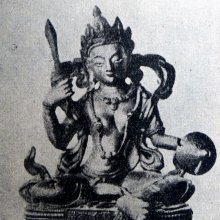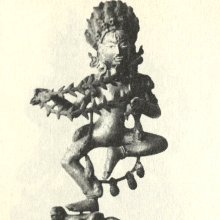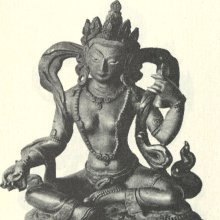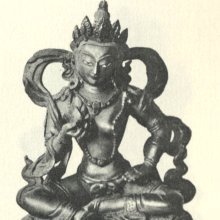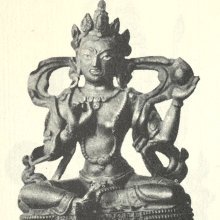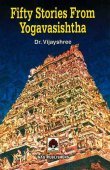Tithi, Tithī: 32 definitions
Introduction:
Tithi means something in Buddhism, Pali, Hinduism, Sanskrit, the history of ancient India, Marathi, Hindi. If you want to know the exact meaning, history, etymology or English translation of this term then check out the descriptions on this page. Add your comment or reference to a book if you want to contribute to this summary article.
Images (photo gallery)
(+2 more images available)
In Hinduism
Vaishnavism (Vaishava dharma)
Source: ISKCON Press: GlossaryTithi (तिथि).—Days of the Vedic calendar measured according to the phases of the moon.
Source: Pure Bhakti: Arcana-dipika - 3rd EditionTithi (तिथि) refers to a “lunar day”:—There are approximately 29.5 lunar days in a lunar month. The first fifteen days begin with the first phase of the waxing moon (pratipat) and end with the full moon (pūrṇimā). The list then repeats itself with the first phase of the waning moon (pratipat) and ends with the new moon (amāvasyā).
- pratipat (prathama)
- dvitīyā;
- tṛtīyā;
- caturthī;
- ṣaṣṭhī;
- saptamī;
- aṣṭamī;
- navamī;
- ekādaśī;
- dvādaśī;
- trayodaśī;
- caturdaśī;
- pañcamī;
- daśamī;
- pūrṇimā or amāvasyā;
In accordance with the lunar day, one would utter, for example, ekādaśī-tithau.

Vaishnava (वैष्णव, vaiṣṇava) or vaishnavism (vaiṣṇavism) represents a tradition of Hinduism worshipping Vishnu as the supreme Lord. Similar to the Shaktism and Shaivism traditions, Vaishnavism also developed as an individual movement, famous for its exposition of the dashavatara (‘ten avatars of Vishnu’).
Jyotisha (astronomy and astrology)
Source: Wisdom Library: JyotiṣaTithi (तिथि) refers to “lunar day”. The term is used throughout Jyotiṣa literature.
Source: archive.org: South Indian Festivities (astronomy)Tithi is the time occupied by the Moon in increasing her distance from the Sun by 12 degrees; in other words, at the exact point of time, when the Moon (whose apparent motion is much faster than that of the Sun), moving eastwards from the Sun after the amavasya, leaving the Sun behind by 12 degrees.
Each of the pakshas consists of fifteen tithis. A tithi is the time required by the moon to increase its distance from the sun westwardby twelve degrees of the zodiac. As the true motions of the sun and the moon vary with their positions in their orbits the length or duration of a tithi is also variable. There are names given to these tithis of the fortnight and the fifteenth tithi of the bright fortnight is called the Paurnamasya-tithi or the full-moon, while the fifteenth tithi of the dark fortnight goes by the name Amavasya-tithi or the new-moon. In fact, the tull-moon and the new-moon mark the ends of the respective fortnights ot the month, bright and dark.
Source: academia.edu: Tithikarmaguṇa in GārgīyajyotiṣaTithi (तिथि).—Within the Indian context, the tithi was likely conceived originally as a means to keep track of the phases of the Moon, with the assumption that a lunar month from one Full Moon to the next is always made up of thirty tithis. A tithi was thus defined as one thirtieth of a synodic month (c. 29.5 days), resulting in an average tithi being slightly less than a day.
According to the refers to the Tithikarmaguṇā of the Gārgīyajyotiṣa, tithi refers to a “cycle of time”. The fifteen tithis conceived as a cycle of time, in either white or dark pakṣa, with each tithi associated with a deity and the corresponding auspicious and inauspicious acts for a Brahmin in service to a king. In the Gārgīyajyotiṣa, the tithis are enumerated from after the Full Moon and a tithi is defined as a day less two lavas resulting inevitably in the tithis beginning from different parts of the day.
Source: Wikibooks (hi): Sanskrit Technical TermsTithi (तिथि).—A lunar day, or one-thirtieth of a synodic month. Note: Tithi is a Sanskrit technical term used in ancient Indian sciences such as Astronomy, Mathematics and Geometry.

Jyotisha (ज्योतिष, jyotiṣa or jyotish) refers to ‘astronomy’ or “Vedic astrology” and represents the fifth of the six Vedangas (additional sciences to be studied along with the Vedas). Jyotisha concerns itself with the study and prediction of the movements of celestial bodies, in order to calculate the auspicious time for rituals and ceremonies.
Purana and Itihasa (epic history)
Source: Cologne Digital Sanskrit Dictionaries: The Purana IndexTithi (तिथि).—An Ārṣeya pravara of Bhārgavas.*
- * Matsya-purāṇa 195. 38.
Tithi (तिथि) is described in the 10th century Saurapurāṇa: one of the various Upapurāṇas depicting Śaivism.—Accordingly, the necessity and method of determining proper Tithis for various Vedic rites and vows are told in chapter fifty-one while chapter fifty two devotes itself to the definition of Dharma and the enumeration of the different kind of sins and crimes and the requisite manner of purification such as penances, punishments and Śiva worship on different Tithis.

The Purana (पुराण, purāṇas) refers to Sanskrit literature preserving ancient India’s vast cultural history, including historical legends, religious ceremonies, various arts and sciences. The eighteen mahapuranas total over 400,000 shlokas (metrical couplets) and date to at least several centuries BCE.
Vastushastra (architecture)
Source: McGill: The architectural theory of the MānasāraTithi (तिथि) refers to the sixth of āyādiṣaḍvarga, six principles that constitute the “horoscope” of an architectural or iconographic object, according to the Mānasāra (IX, 63-73). Their application is intended to “verify” the measurements of the architectural and iconographic object against the dictates of astrology that lay out the conditions of auspiciousness.
Tithi is the 30th part of the whole cycle of lunation (thirty lunar days, approximately equal to twenty-seven solar days), fifteen of which is “light” (the waxing phase of the moon, inc1uding full-moon) and fifteen, dark (its waning phase including new-moon). In addition to the days of paurṇamī, full-moon, and āmāvāsī, new-moon, the names of tithi simply follow the numeric order that the days occur before full- and new-moons, as prathamā, first, dvitīyā, second, and so on, up to fourteenth (day). The text states that among these, aṣṭamī, eighth, and navamī, ninth day after the full and new moons, are inauspicious, and must be avoided.

Vastushastra (वास्तुशास्त्र, vāstuśāstra) refers to the ancient Indian science (shastra) of architecture (vastu), dealing with topics such architecture, sculpture, town-building, fort building and various other constructions. Vastu also deals with the philosophy of the architectural relation with the cosmic universe.
Shaktism (Shakta philosophy)
Source: Google Books: ManthanabhairavatantramTithi (तिथि) refers to a “digit of the moon”, according to the Ṣaṭsāhasrasaṃhitā, an expansion of the Kubjikāmatatantra: the earliest popular and most authoritative Tantra of the Kubjikā cult.—Accordingly, “(The fourfold grouping of the sixteen parts of the sacred seats) differentiate the whole of time according to whether it is gross or subtle. Gross, subtle, and ultimate, they resonate, established in the essential nature of time. They arise within the first digit of the moon [i.e., tithi] (and continue to arise in the succeeding digits) up to the end of the left (current of vitality to) then again (enter) the right. (In this way) life and death (alternate) in accord with the division of the Moon and Sun (which symbolize the inhaled and exhaled breath, respectively)”.

Shakta (शाक्त, śākta) or Shaktism (śāktism) represents a tradition of Hinduism where the Goddess (Devi) is revered and worshipped. Shakta literature includes a range of scriptures, including various Agamas and Tantras, although its roots may be traced back to the Vedas.
Ganitashastra (Mathematics and Algebra)
Source: archive.org: Hindu MathematicsTithi (तिथि) represents the number 15 (fifteen) in the “word-numeral system” (bhūtasaṃkhyā), which was used in Sanskrit texts dealing with astronomy, mathematics, metrics, as well as in the dates of inscriptions and manuscripts in ancient Indian literature.—A system of expressing numbers by means of words arranged as in the place-value notation was developed and perfected in India in the early centuries of the Christian era. In this system the numerals [e.g., 15—tithi] are expressed by names of things, beings or concepts, which, naturally or in accordance with the teaching of the Śāstras, connote numbers.

Ganitashastra (शिल्पशास्त्र, gaṇitaśāstra) refers to the ancient Indian science of mathematics, algebra, number theory, arithmetic, etc. Closely allied with astronomy, both were commonly taught and studied in universities, even since the 1st millennium BCE. Ganita-shastra also includes ritualistic math-books such as the Shulba-sutras.
Ayurveda (science of life)
Toxicology (Study and Treatment of poison)
Source: Shodhganga: Kasyapa Samhita—Text on Visha ChikitsaTithi (तिथि) or “date” (of the snake-bite) which is used in ascertaining the condition of the victim, as taught in the Kāśyapa Saṃhitā: an ancient Sanskrit text from the Pāñcarātra tradition dealing with both Tantra and Viṣacikitsā—an important topic from Āyurveda which deals with the study of Toxicology (Agadatantra or Sarpavidyā).—The malignant asterisms and baneful lunar phases and astral combinations, with reference to snake-bite, are discussed in the tail-end of the fourth Adhyāya. [...] The Kāśyapasaṃhitā mentions the following details regarding the Tithi (Date):—The pañcamī, ṣaṣṭhī, aṣṭamī and the day when there is no tithi of both the pakṣas bode well for recovery for a person to be bitten by snake. More so Dangerous are the pañcamī and trayodaśī of kṛṣṇapakṣa.

Āyurveda (आयुर्वेद, ayurveda) is a branch of Indian science dealing with medicine, herbalism, taxology, anatomy, surgery, alchemy and related topics. Traditional practice of Āyurveda in ancient India dates back to at least the first millenium BC. Literature is commonly written in Sanskrit using various poetic metres.
General definition (in Hinduism)
Source: Hindupedia: PañcāṅgaTithi (तिथि).—Tithi is one lunar day which is defined as the day in which the moon, leaving the sun at the last moment of amāvāsyā or new-moon, traverses twelve degrees towards the east, every day. The tithis are counted from the day next to amāvāsya as pratipad (‘the first’), dvitīyā (‘the second’), tṛtīyā (‘the third’) and so on, up to the fifteenth which is purṇimā (full-moon day). The same calculation is continued after that, in the same way, ending with the amāvāsyā (the new-moon day). The first fortnight is called śuklapakṣa (the bright fortnight) and the second, kṛṣṇapakṣa (the dark fortnight). Consequently a tithi has to be qualified by this also. For instance, the fourth day after amāvāsyā is śukla-caturthī. The eighth day after purṇimā is kṛṣṇa-aṣṭamī.
Source: ACHC: Smarta PujaTithi (तिथि) refers to “lunar days”.—Either half [of a month, viz., śuklapakṣa and kṛṣṇapakṣa] consists of fifteen lunar days (tithi) of which the full moon day (paurṇimā) and the new moon day (amavāsya) are very important. Of the tithis, the fourth one of the bright half (vināyaki-caturthi) and of the dark half (saṃkaṭa-caturthi) are important for the worship of Ganapati, the eleventh (ekādasī) for the worship of Viṣṇu, Of the days of the week, Monday is a good day for Śiva worship, Tuesday and Friday for Devī, Tuesday also for Ganapati, Thursday for Dattatreya, Saturday for Saturn and—only in Maharashtra—for Hanumat, Sunday for Khaṇḍoba.
In Buddhism
Tibetan Buddhism (Vajrayana or tantric Buddhism)
Source: archive.org: The Indian Buddhist IconographyTithi (तिथि) refers to the “distances between the sun and the moon”, as commonly depicted in Buddhist Iconography, and mentioned in the 11th-century Niṣpannayogāvalī of Mahāpaṇḍita Abhayākara.—The tithis or the distances between the sun and the moon are also deified, but these cannot be properly determined in the absence of definite iconographic information. Some of these tithis (dates) are found represented in the Chinese collection at Peiping.
Source: OSU Press: Cakrasamvara SamadhiTithi (तिथि) refers to a “lunar day” [i.e., tithau amuka], according to the Guru Mandala Worship (maṇḍalārcana) ritual often performed in combination with the Cakrasaṃvara Samādhi, which refers to the primary pūjā and sādhanā practice of Newah Mahāyāna-Vajrayāna Buddhists in Nepal.

Tibetan Buddhism includes schools such as Nyingma, Kadampa, Kagyu and Gelug. Their primary canon of literature is divided in two broad categories: The Kangyur, which consists of Buddha’s words, and the Tengyur, which includes commentaries from various sources. Esotericism and tantra techniques (vajrayāna) are collected indepently.
India history and geography
Source: Cologne Digital Sanskrit Dictionaries: Indian Epigraphical GlossaryTithi.—(CII 3; IA 17), a lunar day; one mean tithi is equal to 0.9843529572 of a mean solar day and night; the mean tithis in a solar year are 371, and 3 ghaṭīs and 53.4 palas; gener- ally the term tithi means the end of a tithi, not its beginning or duration, and the week-day of a tithi is the week-day on which that tithi ends; the tithis given in the Pañcāṅga are apparent, not mean, and they are intended to be given from apparent sunrise. Cf. Tamil tiyadi, tedi (SITI), a date. (IE 7-1-2), ‘fifteen’. (EI 16), same as mahā-tithi, an auspicious tithi; cf. saptamī called the tithi of the sun-god and aṣṭamī that of the god Śiva (Ep. Ind., Vol. V, p. 168, note 4). Note: tithi is defined in the “Indian epigraphical glossary” as it can be found on ancient inscriptions commonly written in Sanskrit, Prakrit or Dravidian languages.

The history of India traces the identification of countries, villages, towns and other regions of India, as well as mythology, zoology, royal dynasties, rulers, tribes, local festivities and traditions and regional languages. Ancient India enjoyed religious freedom and encourages the path of Dharma, a concept common to Buddhism, Hinduism, and Jainism.
Languages of India and abroad
Pali-English dictionary
Source: BuddhaSasana: Concise Pali-English Dictionarytithi : (f.) a lunar day.
Source: Sutta: The Pali Text Society's Pali-English DictionaryTithi, (Sk. tithi) a lunar day DhA. I, 174; PvA. 198. (Page 302)

Pali is the language of the Tipiṭaka, which is the sacred canon of Theravāda Buddhism and contains much of the Buddha’s speech. Closeley related to Sanskrit, both languages are used interchangeably between religions.
Marathi-English dictionary
Source: DDSA: The Molesworth Marathi and English Dictionarytithi (तिथि).—f (S) A lunar day, 1&2044;30 of a whole lunation.
Source: DDSA: The Aryabhusan school dictionary, Marathi-Englishtithi (तिथि).—f A lunar day.
Marathi is an Indo-European language having over 70 million native speakers people in (predominantly) Maharashtra India. Marathi, like many other Indo-Aryan languages, evolved from early forms of Prakrit, which itself is a subset of Sanskrit, one of the most ancient languages of the world.
Sanskrit dictionary
Source: DDSA: The practical Sanskrit-English dictionaryTithi (तिथि).—m. or f. [अत्-इथिन् पृषो° वा ङीप् (at-ithin pṛṣo° vā ṅīp) cf. Uṇādi-sūtra 4.2]
1) A lunar day; तिथिरेव तावन्न शउद्ध्यति (tithireva tāvanna śauddhyati) Mu.5; Kumārasambhava 6.93, 7.1.
2) The number '15'.
Derivable forms: tithiḥ (तिथिः).
--- OR ---
Tithī (तिथी).—f. (= tithiḥ q. v.) Mahābhārata (Bombay) 13.
Source: Cologne Digital Sanskrit Dictionaries: Shabda-Sagara Sanskrit-English DictionaryTithi (तिथि).—mf. (-thiḥ-thiḥ or -thī) A lunar day, 1-30th of a whole lunation. E. at to go, to proceed, affix ithin and the radical initial rejected; also ṅīṣ being added tithī.
Source: Cologne Digital Sanskrit Dictionaries: Benfey Sanskrit-English DictionaryTithi (तिथि).—m. and f., also tithī, f. A lunar day, (1/30) of a whole lunation, [Mānavadharmaśāstra] 2, 30; Mahābhārata 13, 4238.
Source: Cologne Digital Sanskrit Dictionaries: Cappeller Sanskrit-English DictionaryTithi (तिथि).—[masculine] [feminine] a lunar day (also tithī [feminine]); viśeṣa a particular i.[drama]*
Source: Cologne Digital Sanskrit Dictionaries: Monier-Williams Sanskrit-English Dictionary1) Tithi (तिथि):—mf. ([Siddhānta-kaumudī stry. 25]) a lunar day (30th part of a whole lunation of rather more than 27 solar days; 15 Tithis, during the moon’s increase, constitute the light half of the month and the other 15 the dark half; the auspicious Tithis are Nandā, Bhadrā, Vijayā, Pūrṇā, [Varāha-mihira’s Bṛhat-saṃhitā ic, 2]), [Gobhila-śrāddha-kalpa i f.; Śāṅkhāyana-gṛhya-sūtra; Manu-smṛti] etc.
2) the number 15 [Varāha-mihira’s Bṛhat-saṃhitā; Varāha-mihira’s Bṛhajjātaka; Laghujātaka, by Varāha-mihira; Sūryasiddhānta]
3) cf. janma-, dus-, mahā-.
4) Tithī (तिथी):—[from tithi] f. a lunar day, [Mahābhārata xiii, 4238.]
Source: Cologne Digital Sanskrit Dictionaries: Yates Sanskrit-English DictionaryTithi (तिथि):—[(thiḥ-thiḥ)] 2. m. f. A lunar day.
Source: DDSA: Paia-sadda-mahannavo; a comprehensive Prakrit Hindi dictionary (S)Tithi (तिथि) in the Sanskrit language is related to the Prakrit word: Tihi.
[Sanskrit to German]
Sanskrit, also spelled संस्कृतम् (saṃskṛtam), is an ancient language of India commonly seen as the grandmother of the Indo-European language family (even English!). Closely allied with Prakrit and Pali, Sanskrit is more exhaustive in both grammar and terms and has the most extensive collection of literature in the world, greatly surpassing its sister-languages Greek and Latin.
Hindi dictionary
Source: DDSA: A practical Hindi-English dictionaryTithi (तिथि):—(nf) a date; ~[ta] dated.
...
Kannada-English dictionary
Source: Alar: Kannada-English corpusTithi (ತಿಥಿ):—
1) [noun] a lunar day (approx. equal to 0.9843 solar day).
2) [noun] a religious, highly ritualistic ceremony observed every year on the day of death (usu.) of one’s father or mother; ತಿಥಿ ಮಾಡು [tithi madu] tithi māḍu to ritualistically offer food to the deceased parent every year on the day of his or her death.
3) [noun] (fig.) to cause to undergo drudgery; to inflict deathly pains.
Kannada is a Dravidian language (as opposed to the Indo-European language family) mainly spoken in the southwestern region of India.
See also (Relevant definitions)
Starts with (+65): Tithe, Tithi Khana, Tithi-bhoga, Tithi-dhruva, Tithi-kendra, Tithi-shuddhi, Tithi-spashta-kendra, Tithibhadanika, Tithibhushana, Tithicakra, Tithicandrika, Tithicandrodaya, Tithicintamani, Tithicudamanikamadhenu, Tithidana, Tithidevata, Tithididhiti, Tithidvaidhaprakarana, Tithidvaita, Tithidvaitanirnaya.
Ends with (+50): Adhikatithi, Anatithi, Atithi, Bhatta medhatithi, Bhimatithi, Bhogya-tithi, Bhramaratithi, Bhukta-tithi, Brahmatithi, Capetapatanatithi, Dagdhatithi, Darsha-tithi, Deshatithi, Devatithi, Dhanyatithi, Divasatithi, Divatithi, Durgantaratithi, Dustithi, Ghatatithi.
Full-text (+899): Purnima, Tithyardha, Karana, Tithikshaya, Adhikatithi, Purna, Tithinirnaya, Pancadashi tithi, Sammukhi, Tithiprani, Tithi-kendra, Rikta, Tithi-shuddhi, Vishnutithi, Tithi-dhruva, Ratritithi, Dustithi, Kulatithi, Kulakulatithi, Yugadya.
Relevant text
Search found 68 books and stories containing Tithi, Tithī; (plurals include: Tithis, Tithīs). You can also click to the full overview containing English textual excerpts. Below are direct links for the most relevant articles:
The Indian Buddhist Iconography (by Benoytosh Bhattachacharyya)
Significance of the Moon in Ancient Civilizations (by Radhakrishnan. P)
2. Differentiation of Paksha Bala < [Chapter 6 - Relevance of Astrology]
13. Moon Star-days, Tithis and Vitamin Content < [Chapter 15 - Conclusion]
3. Pancha-purna-yoga < [Chapter 6 - Relevance of Astrology]
The Agni Purana (by N. Gangadharan)
Chapter 122 - Pañcāṅga: The Almanac
Chapter 123 - Description of the Svarodayacakra, etc.
Chapter 141 - Description of herbs used in charms, medicines etc.
The Brahmanda Purana (by G.V. Tagare)
Chapter 17 - Appropriate Tithis for performing Śrāddha < [Section 3 - Upodghāta-pāda]
Chapter 28 - Meeting of Purūravas and Pitṛs < [Section 2 - Anuṣaṅga-pāda]
Chapter 13 - The Real Nature of Kāla (time) < [Section 2 - Anuṣaṅga-pāda]
The Matsya Purana (critical study) (by Kushal Kalita)
Part 4.2a - Akṣayatṛtīyā-vrata < [Chapter 4 - Religious aspects of the Matsyapurāṇa]
Part 4.4 - List of other Vratas described in the Matsyapurāṇa < [Chapter 4 - Religious aspects of the Matsyapurāṇa]
Part 4.3a - Kṛṣṇāṣṭamī-vrata < [Chapter 4 - Religious aspects of the Matsyapurāṇa]
Garga Samhita (English) (by Danavir Goswami)
Verse 4.8.33 < [Chapter 8 - In the Story of the Yajña-sītās, the Glories of Ekādaśī]
Verse 4.8.50 < [Chapter 8 - In the Story of the Yajña-sītās, the Glories of Ekādaśī]
Verse 4.8.11 < [Chapter 8 - In the Story of the Yajña-sītās, the Glories of Ekādaśī]
Related products

